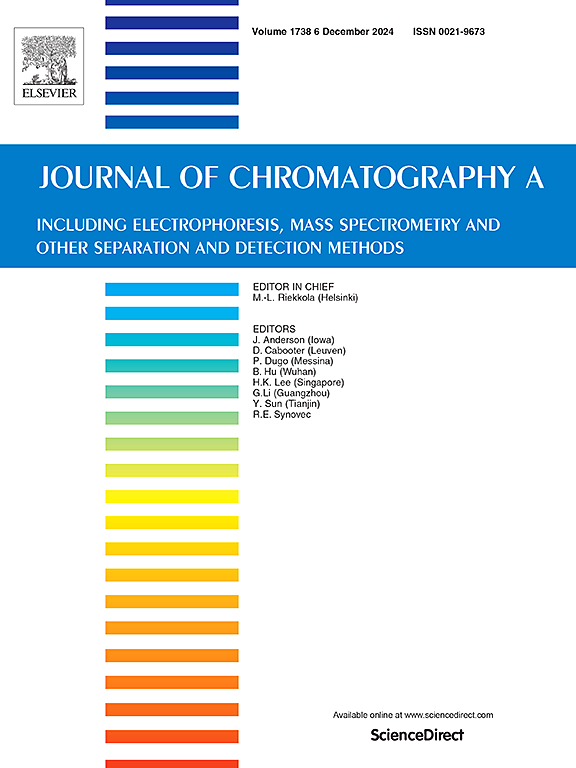Comparison of triple quadrupole and hybrid quadrupole-time-of-flight mass analyzers for LC-MS/MS determination of casein and ovalbumin in wines
IF 3.8
2区 化学
Q1 BIOCHEMICAL RESEARCH METHODS
引用次数: 0
Abstract
Casein and ovalbumin are commonly used as fining agents in the winemaking process to remove undesirable compounds like polymeric phenols. Since these proteins can trigger allergenic reactions in susceptible individuals, their presence must be declared on the label. Mass spectrometry (MS) using triple quadrupole (QqQ) analyzer under Multiple Reaction Monitoring (MRM) mode is one of the most used techniques for targeted proteomic analysis. However, recent advances in hybrid mass analyzers like quadrupole-time-of-flight analyzers (QTOF) have proved their potential for quantitative analysis. The objective of the present work was to perform a comprehensive analytical comparison of QqQ and QTOF performance for casein and ovalbumin quantification in wines. The performances of both analyzers were compared through the evaluation of fourteen wine samples applying isotope dilution analysis. Target proteins were determined employing bottom-up approach studying the resulting peptides from trypsin digestion. Results showed that QTOF analysis allowed the detection of 12, 6, and 4 more transitions than QqQ for α-casein, β-casein and ovalbumin, respectively. Instead, QqQ showed detection (LOD) and quantification limits (LOQ) 10-fold and 20-fold lower than QTOF for casein and ovalbumin, respectively. Sample analysis by QqQ revealed that 93 % of samples had detectable levels of casein and/or ovalbumin and 64 % showed higher levels than the EU limit for declaration. Overall, even when QqQ is the gold standard for accurate quantification, our results suggest the use of QTOF is a proper alternative for casein and ovalbumin determination in wines considering the higher number of transitions identified with a fit-of-purpose LOD and LOQ.
求助全文
约1分钟内获得全文
求助全文
来源期刊

Journal of Chromatography A
化学-分析化学
CiteScore
7.90
自引率
14.60%
发文量
742
审稿时长
45 days
期刊介绍:
The Journal of Chromatography A provides a forum for the publication of original research and critical reviews on all aspects of fundamental and applied separation science. The scope of the journal includes chromatography and related techniques, electromigration techniques (e.g. electrophoresis, electrochromatography), hyphenated and other multi-dimensional techniques, sample preparation, and detection methods such as mass spectrometry. Contributions consist mainly of research papers dealing with the theory of separation methods, instrumental developments and analytical and preparative applications of general interest.
 求助内容:
求助内容: 应助结果提醒方式:
应助结果提醒方式:


